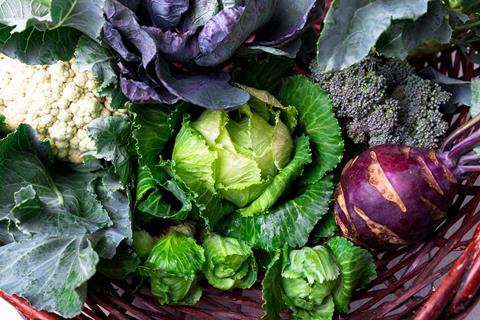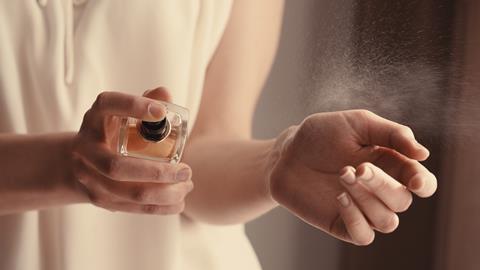Ben Valsler
Kat Arney introduces the compound behind musky notes in popular perfumes, and explores its role in health and wellbeing…
Kat Arney

You may not immediately recognise the chemical structure of indole unless you’re an organic chemistry fan, but you’ll certainly know its smell. In high concentrations it’s most easily recognised as the stink of poop or the stench of coal tar. But in lower amounts it’s a contributor to the fragrance of jasmine, tuberose and orange blossoms, and is also used as an ingredient in many perfumes for its fresh, sweet and slightly animal odour.
A small organic molecule made solely of carbon, hydrogen and nitrogen, indole is made up of two carbon-based rings joined together. Indole is actually solid at room temperature, although enough molecules can easily escape as gas to produce the familiar whiff, explaining why a fresh warm poop smells more potent than a cold one…
The chemical itself was first isolated in the 1860s through the process that gives indole its name: treating the dye indigo with oleum, a solution of sulphur trioxide in sulphuric acid. It was first synthesised by German chemist Adolf von Baeyer in 1866, and indole and its derivatives were widely used in the booming dye industry throughout the late 19th century. Today, indole and indole-based compounds are widely used for making pharmaceutical drugs, textile dyes and fragrances. It also makes an appearance as a flavour enhancer in products such as coffee and chocolate, as it turns out they smell and taste a lot better with just a tiny whiff of the real brown stuff. Indole isn’t always a welcome additive, though: some white wines develop an unpleasant flavour reminiscent of floor polish after a few months of storage, thanks to high levels of indole-3-acetic acid (also known as I3C) in the grapes.

But there’s far more to indole than its industrial and edible applications. In fact, it’s produced by pretty much every species on Earth, from plants and bacteria to mammals and more. Indole is often used as a signalling molecule inside or between cells, or even between organisms and across species, and it also turns up in a wide range of biological functions.
The most obvious role for indole in plants is in the fragrance of flowers – for example, researchers in Germany have discovered that the rich scent of yellow poppies comes from indole, while the bright petal colours are also produced by indole-based pigments, making them very popular with bees.

Cruciferous veg and brassicas like broccoli, cabbage and cauliflower have particularly high levels of I3C. Intriguingly, people whose diets are high in these vegetables appear to have lower rates of certain types of cancer – an effect that is probably due to diindolylmethane, or DIM, which is made when I3C is broken down in the stomach. Both I3C and DIM are being investigated for their potential cancer-prevention properties, particularly for hormone-driven cancers like breast cancer and for cervical cancer.

It’s in the gastrointestinal tract that we find another angle on indole. Studies have suggested indoles made by gut bacteria might be involved in heart disease and metabolic disorders. One paper published in 2018 from a team of French researchers showed that rats whose gut bacteria produced high levels of indole were more anxious than those with lower levels, suggesting an intriguing way in which these bugs – collectively known as the microbiome – may be influencing behaviour or even contributing to psychological conditions such as depression or anxiety, although much more work needs to be done to establish a link between indole and poor mental or physical health in humans.

Finally, indole isn’t just made by bacteria in the gut, but also by those found on the skin and particularly in the groin, especially if that area has become warm and sweaty through some vigorous bedroom activity. It’s therefore no surprise that indole-rich perfumes and aftershaves are usually thought of as sensuous and sexy as they call to mind the musky aroma of a lover’s body, with Chanel No. 5 and my personal favourite Calvin Klein’s Obsession being two of the most well-known examples. Although it’s probably best not to mention the connection with faecal bacteria if you’re handing over a bottle to your loved one as a gift.
Ben Valsler
That was Kat Arney with indole. Next week, rabies, experimental treatments and unusual looking drug molecules, with Katrina Krämer.
Katrina Krämer
With a structure like this, drug discovery chemists today would probably chuck it in the bin before it could go through any biological testing. But in the 1960s, when group of researchers at chemistry conglomerate DuPont first realised that amantadine was an excellent antiviral, ideas of how drugs need to look might have been a bit different.
Ben Valsler
Join Katrina next time. Until then the usual lines of communication are open – email chemistryworld@rsc.org or tweet @chemistryworld with any comments or compounds to cover. Thanks for joining me, I’m Ben Valsler.













No comments yet